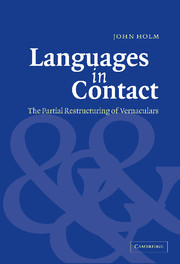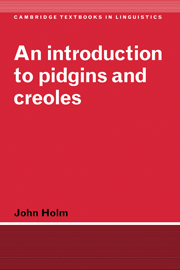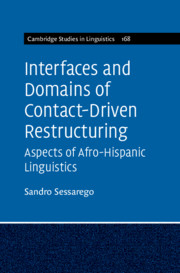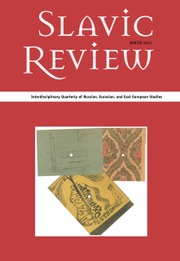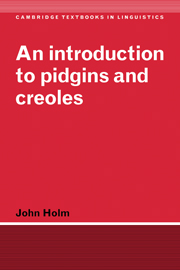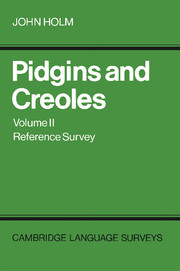Languages in Contact
There is widespread agreement that certain non-Creole language varieties are structurally quite different from the European languages out of which they grew; however, until recently, linguists have found difficulty in accounting for either their genesis or their synchronic structure. This 2003 study argues that the transmission of source languages from native to non-native speakers led to 'partial restructuring', whereby some of the source languages' morphosyntax was retained, but a significant number of substrate and interlanguage features were also introduced. Comparing languages such as African-American English, Afrikaans and Brazilian Vernacular Portuguese, John Holm identifies the linguistic processes that lead to partial restructuring, bringing into focus a key span on the continuum of contact-induced language change which has not previously been analysed. Informed by the first systematic comparison of the social and linguistic facts in the development of these languages, this book will be welcomed by students of contact linguistics, sociolinguistics and anthropology.
- The first comparison of the structure of African American English, Afrikaans, Brazilian Vernacular Portuguese, Non-standard Caribbean Spanish and the vernacular lects of Reunion French
- The first comparison of the social history of their speakers
- The first theory that considers more than the standard and non-standard varieties of more than one of these five languages
Reviews & endorsements
Review of the hardback: 'With its cogent argumentation, supported by well-chosen examples and data clearly displayed in tables, Languages in Contact not only validates a promising hypothesis for explaining the varieties analyzed [BP, African American English, Non-standard Caribbean Spanish, Afrikaans and Réunionnais French] but also outlines what may turn out to be a particularly fertile research paradigm.' Journal of Pidgin and Creole Languages
Review of the hardback: 'Despite its modest length, this endeavour of linking the sociolinguistic to linguistic factors shared by five languages represents an exciting step in better understanding processes involved in the formation of contact languages.' Canadian Journal of Lingusitics
Review of the hardback: 'A comparative approach to creolistics is nothing new, and Holm is a past master at it, but this work, essential reading for all interested in creolistics, is the first classic (and let us hope, by no means the last) of the new field of comparative semi-creolistics.' Language in Society
Product details
December 2004Adobe eBook Reader
9780511059094
0 pages
228 × 152 mm
0kg
5 maps 9 tables
This ISBN is for an eBook version which is distributed on our behalf by a third party.
Table of Contents
- 1. Language contact and partial restructuring
- 2. Social factors in partial restructuring
- 3. The verb phrase
- 4. The noun phrase
- 5. The structure of clauses
- 6. Conclusions.

